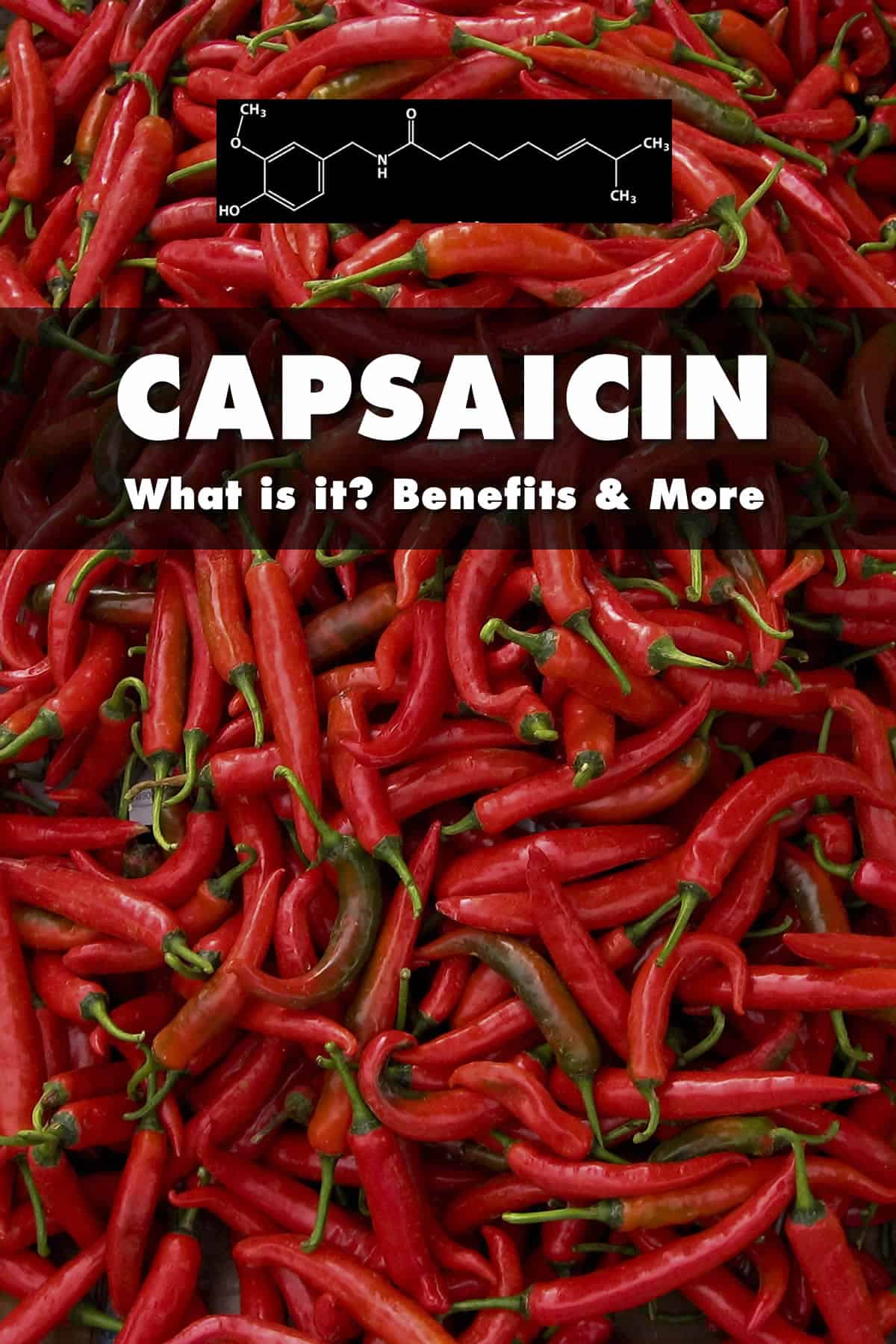What is Capsaicin?
Capsaicin is essentially the ingredient that makes chili peppers hot. When you bite into any kind of hot pepper and you get that spicy kick on the tongue, love it or hate it, it’s the result of capsaicin. It is considered an irritant to humans and other mammals, producing a burning sensation when it touches mucus membranes, which is the reason why so many people love to consume it. It’s also the reason why you should be very careful with your hands after you are done handing any sort of hot pepper - most people have made the mistake of rubbing their eyes or some other sensitive area of the skin after touching a hot pepper at least once, but usually you won’t do it again! Capsaicin is one of a collection of similar compounds called “capsaicinoids” that give chili peppers their pungent heat. It is thought to have evolved in peppers as a defense against fungi and possibly mammals.
Capsaicin - 16 Million SHU dihydrocapsaicin - 16 Million SHU nordihydrocapsaicin - 9.1 Million SHU homocapsaicin - 8.6 Million SHU homodihydrocapsaicin - 8.6 Million SHU
These 5 chemicals occur naturally, but one has been synthetically created, called “vanillylamide of n-nonanoic acid” (VNA, or PAVA). It is a test used to measure a chili pepper’s pungency and heat. A typical jalapeno pepper, for example, has only a bit of capsaicin within it, as it averages 5,000 Scoville Heat Units. Pure capsaicin, therefore, is about 3200 times hotter than a jalapeno. That is very hot. Learn more about the Scoville Scale here, or my post on What Makes Chili Peppers Hot. However, if you feel the burning sensation on your skin or in your mouth from peppers, your best bet is to use a dairy product to combat the heat. Dairy products contain a chemical called casein that combats the effects of capsaicin by stripping it from its receptor site on the skin. There are other ways to help. See my page for How to Stop the Chili Pepper Burn for additional methods and tips. When handling a large quantity of hot peppers for a long period of time, it’s a good idea to wear gloves to avoid the burn in the first place. It has been worked into capsaicin patches, capsaicin creams and topical ointments to battle many types of pain, such as that related to rheumatoid arthritis and fibromyalgia, as well as joint pain.
Diabetes Management
A regular diet of chili peppers has shown a positive improvement of blood sugar and insulin reactions. Also, it is possible to treat painful diabetic neuropathy with capsaicin cream. Side effects of capsaicin skin creams include a mild burning sensation, but the trade off is worth it. Prostate cancer tumors treated with capsaicin were about one-fifth the size of tumors in non-treated mice. Capsaicin is being researched for many different types of cancers, for its ability to shrink tumors, prevent metastasis, causing apoptosis, as well as cancer prevention. Research and clinical trials are continuous and ongoing.
Lowering Blood Pressure
Eating chili peppers are naturally high in vitamins A and C, and also bioflavinoids. They help strengthen our blood vessels, which makes them more elastic and better able to adjust to blood pressure fluctuations. Capsaicin also can make us sweat, which causes fluid loss, temporarily reducing overall blood volume. See more about the Health Benefits of Chili Peppers. The resin spurge Euphorbia resinifera contains a chemical called resiniferatoxin, or RTX, which measures in at 16 Billion Scoville Heat Units. That is extremely, extremely hot. Here are some frequently asked questions about capsaicin. In a study published in Drug and Chemical Toxicology determined an average-sized person would need to consume nearly half a gallon of Tabasco® Sauce to overdose and lose consciousness. A fatal dose of capsaicin for a 150 pound person was determined to be about 13 grams. Good luck! Here are some links to further interest.

